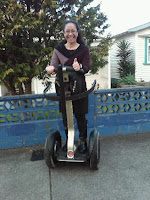DAY AFTER:
Sunday 10 October 2010


Well it’s all over bar the screaming and a-shouting! I wasn’t selected for Local Board Owairaka subdivision of Albert-Eden-Roskill. In fact none of my C&R team mates made it over the line. Chris Fletcher won her race and Paul Goldsmith was pipped at the post by City Vision’s Dr Cathy Casey.
Of course I’m disappointed not to have made it over the line – you don’t enter a race to come second or last. I think I did well on the streets, I did a good door knock campaign, I really enjoyed meeting people – if there was anything I would change about that part of the campaigning strategy it would be that I would knock on more doors and I’d probably want to go round a second time. So next time and there will be a next time I’ll give myself more lead-in. Believe me there will be a next time and it won’t be in three years either. Now that I am not on a

Local Board, it frees me up to seek nomination for a central government candidacy.

There’s no need for me to feel compromised by my duty to the Local Board and my determination to get to Wellington. Whether I get a nomination will depend on several very key factors:
a) How hard I campaigned at this Local Board level b) What skills I bring to the Party c) Team-ship; my dedication to the Party and its policies.
Selection will be up to me – how hard I work, how well I can convince the Party that my skill and experience will not only compliment but enhance the Party and although I have ‘Boss’ and ‘Leadership’ roles in my professional life I am also a very good follower. I hope also to convince the Party that I’m actually quite a nice person as well. I'm well conditioned that Party members can take me home to meet the husband/wife/kids and I won’t eat the pot plants and kick the cats. Don’t get me wrong….I said earlier I’m disappointed but age and business ownership has toughened me up I take very few things personally and I always have a contingency plan.

Should I take defeat personally….hell no. I know what Maori media commentators will say; Pakeha didn’t vote for me because I was Maori…and because suburbia is by and large homophobic they won’t vote for a gay. Well I don’t believe that, I refuse to buy into that paranoia. That’s rubbish.
What I do think is that, it’s harder to run at Local Board Level

if you don’t already have a very big profile at the coal face. There is scant to no media coverage given to Local Boards but rather the ‘sexy’ stories are up at Mayor and Councillor level. Which means for those of us who haven’t worked at flax roots it takes a lot more leg work, and you do need to diversify the methods of community contact: door knocking, community hui, telephone canvassing, fund raising events and there’s no substitution for actually working with and for charity and community groups. Those that won in Owairaka were Community people – absolutely they were; there’s no denying it. So when it came time to vote, as much as residents said they wanted change, Owairaka voted conservatively and stayed with those they knew. Because they knew these people the community felt they could trust them. I can understand that. It had nothing to do with ‘Left’ and ‘Right’ but everything to do with ‘Local’. The Super City is after all an unknown quantity. All communities are concerned and rightly so, about how they will fare. Will they be overlooked in the transitioning phase? Will they be bossed around by the CCO’s? Will their rates and rents increase? I’m not saying Owairaka chose correctly – they didn’t they should have chosen me. What I need to do is to convince them that they should have voted for me and they can vote for me next year.

In respect to the big-picture view of the elections, the ‘left’ – particularly the unions and Labour Party faithful worked strategically to get South Aucklanders to vote. They were methodical and meticulous and their efforts paid off. It took organisation and time and a lot of people power, but it worked. How desperate were the ‘left’ to get Len Brown into the job, very desperate. You got to admire the job they did on South and West Auckland. They rallied the people, constantly attended to them, it was almost bully-boy tactics. How desperate were they, very desperate.
So now I go back to my other job. I will not be licking my wounds,

I am not battered, or bruised physically or emotionally – that’s for kids! I go back to my day job, armed with my A4 exercise book crammed full of notes on how to run a bigger, smarter, slicker campaign – not in three years time but next year.
Follow me if you like. I’m still going to call the blog ‘Diary of a Campaigner’ and since I work in TV I may as well make it a VBLOG. That’ll be fun. To all of you who supported me with votes and good wishes – mauri ora koutou katoa!





